Whew, after years of lusting and dreaming of a set of Moment Sierra Tours (the women’s 104 waist-triple camber touring ski that preceded the Deathwish Tour 104), not only did Moment release a Deathwish Tour 104 (DWT 104) for winter 23/24, but I was able to get a pair for review.
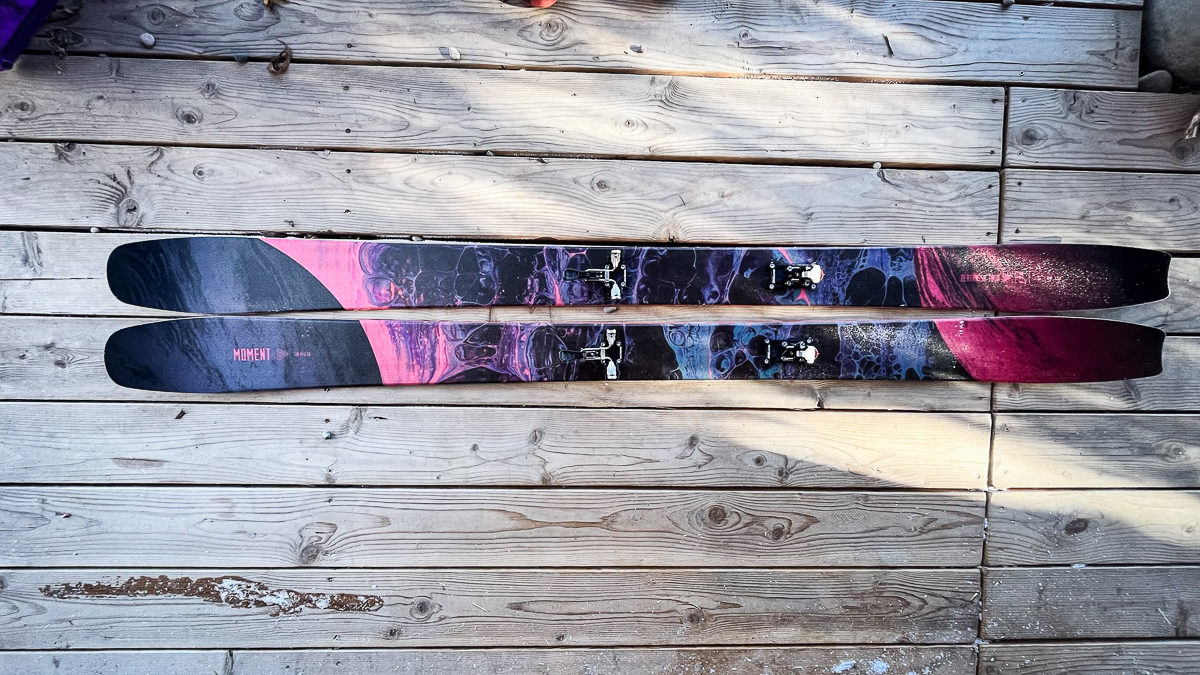
Moment, based in Reno, NV, is the largest American ski manufacturer. Despite making and selling what seems to be quite a lot of skis, they resemble a small indie ski maker in almost every way. From their innovative/unique/sometimes-sorta-out-there ski designs and topsheets to their community engagement and openness to feedback, Moment appears to be living the American (ski manufacturers) dream. Between phases of wild powder skis—check out the Comi or Ghost Train if you aren’t familiar—Moment has released a steady stream of nice, unique, and innovative designs like triple-cambered models as well as some well-executed classic shapes like the cambered twin tip Wildcat and full rockered Meridian.
These days, the core of their touring lineup consists of the Wildcat and Deathwish lines—with a few widths available in each. You’ll notice that all of these models, in addition to the Meridian, share a heavily rockered, twin-tip shape. Much of the difference in the models lies underfoot, where the Wildcat features a more traditional camber, the Deathwish a unique triple camber, and the Meridian a full rocker/reverse camber design. While it comes with some frustration during kick turns and transitions, each of these twin-tipped shapes is intriguing, and I’m excited to continue to explore when and where each thrives—perhaps a worthwhile subject of a future THR post.
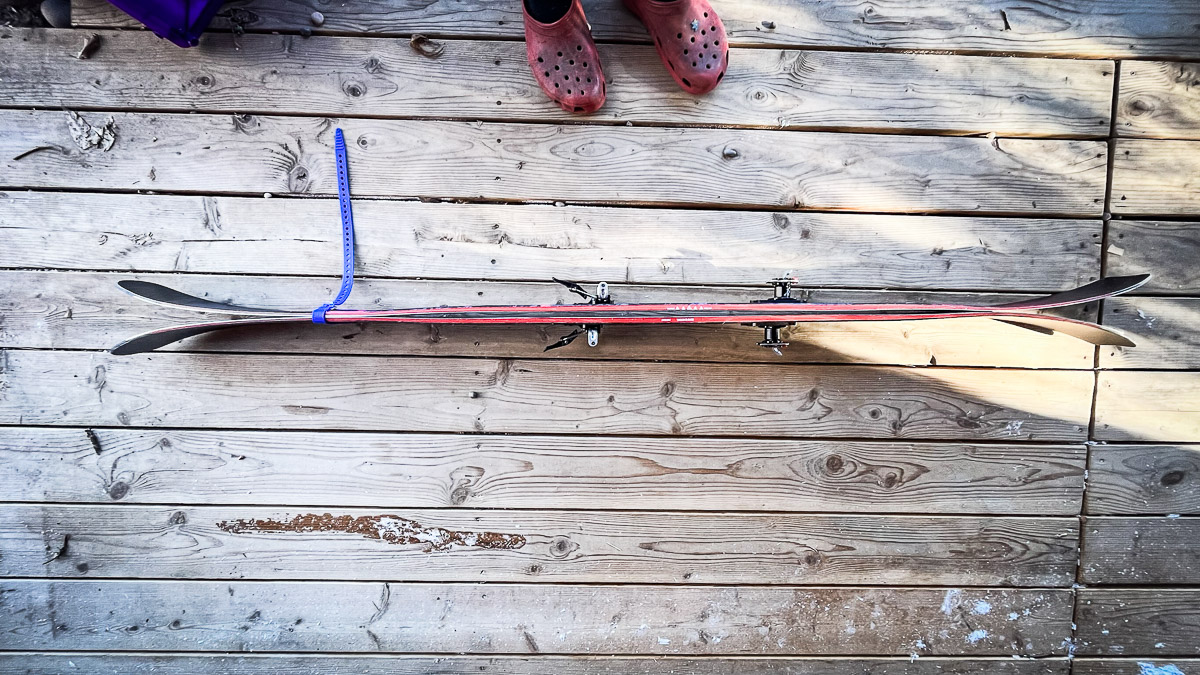
Design Highlights
Triple camber certainly steals the show as the standout feature of the Deathwish series. The theory here is that the two micro camber pockets ahead of and behind the binding area focus the pressure/energy from flexing/compressing the ski into a turn into a smaller area, producing enhanced edge hold in firm conditions. In my experience, this works remarkably well; the Deathwish skis firm snow like it has a much longer effective edge than it has.
In addition to triple camber, we have a modern, progressive shape with a -6cm mount point, plentiful rocker in the tip and tail, and Moment’s characteristic square tip and concave twin tip tail that holds a skin tail clip well. Aside from the triple camber, the shape of the Deathwish is very much that of a playful powder ski, and it certainly achieves this. Add in the triple camber, and we are left with a super versatile mix of playful soft snow ski with enough rocker and taper to handle variable and 3d snow, all blended with impressive edge hold and firm snow performance.
Here’s a little more on the -6cm mount. This mount position certainly falls into the progressive category, which usually rewards a more centered stance and playful skiing. I found the DWT 104 played well with a more aggressive, forward stance when arcing/carving, but simultaneously, one could ease up a little and take advantage of the playful tails with a more centered stance. As cool as that dichotomy felt, the best part is that it made for a good pairing with lighter boots and a generally forgiving experience where I wasn’t punished for not being “on it” all the time.
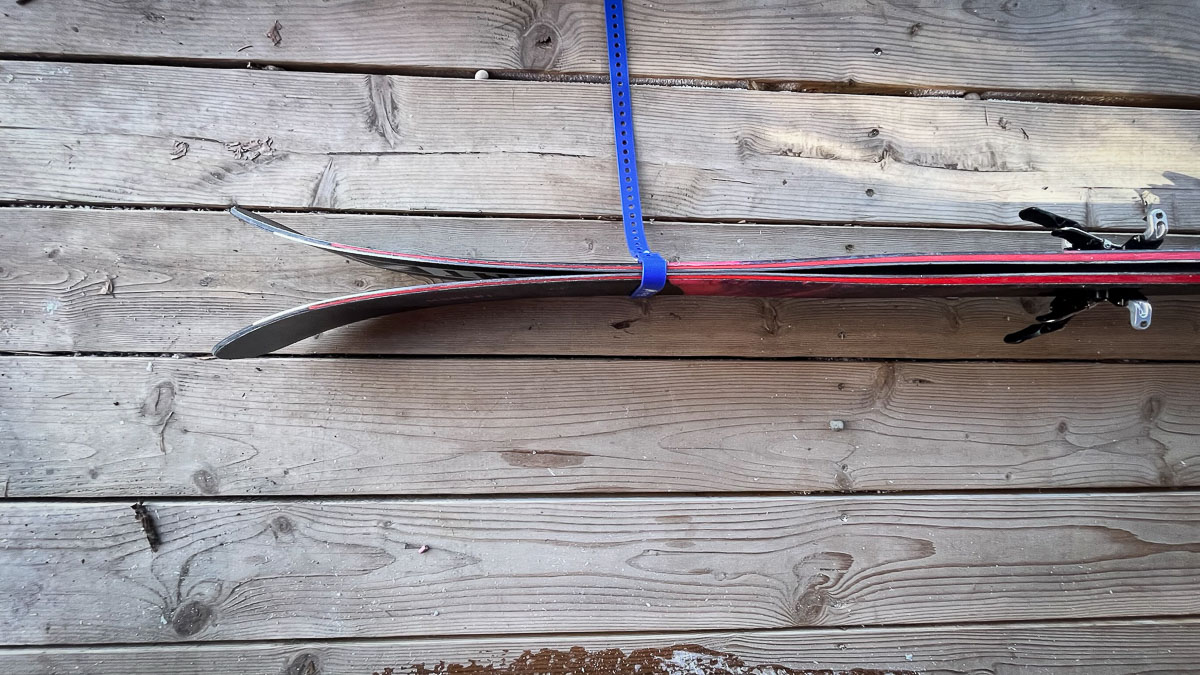
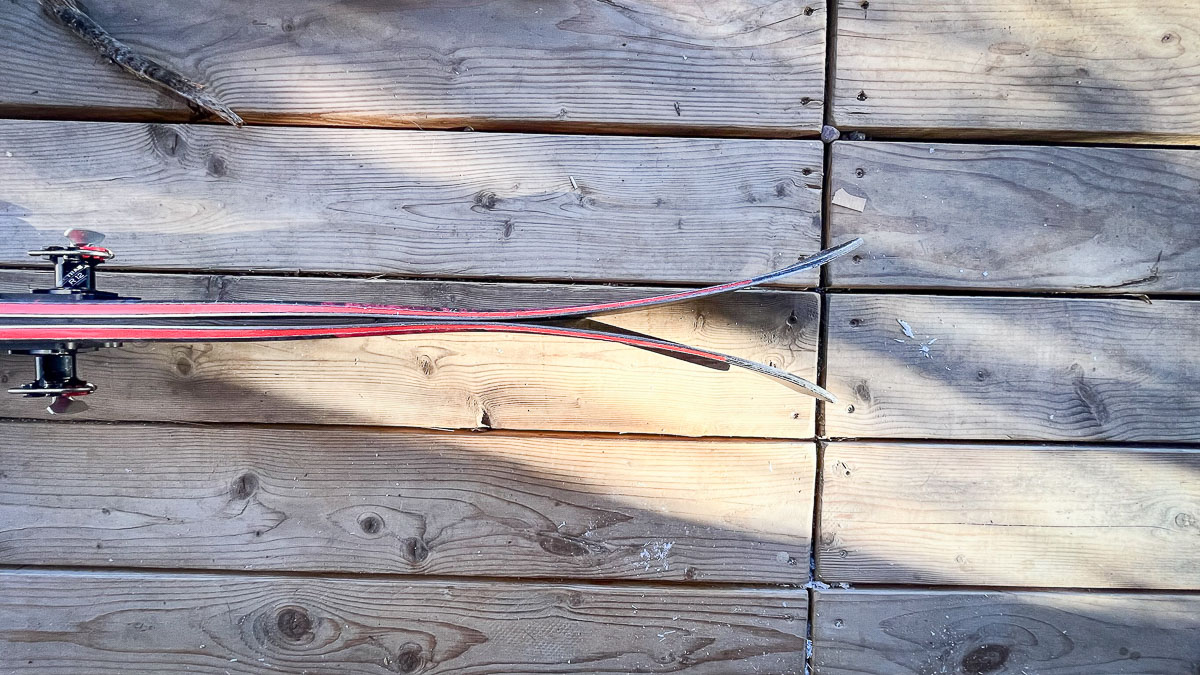
Moment has a long history of producing robust and well-made skis—this pedigree crosses over well to their lightweight touring skis. A Paulownia/Beech core is wrapped in a “low-fat” carbon layup with VDS rubber damping, ABS sidewalls, and a durable, textured nylon topsheet. The edges and bases held up well to significant abuse last winter as well. Overall, the construction feels robust, and the quality is on par with the best I’ve seen. While it hasn’t presented any issues yet, the lack of full-wrap edges seems like the only potential weak point of the construction.
I’m not sure if this is standard or special for my pair, but the sidewall states, “Skimo is neither.”… Luke (one of the Owners at Moment) was quick to point out that the company isn’t aiming for ultra-lightweight with their touring layups when I commented on the subject. Oh well, 1650g is a great weight to end up at for a versatile/daily driver touring ski.
I have been on a years-long quest for the perfect mid-winter Teton high-peak ski. My perfect ski for this would be excellent in soft snow, with good float and maneuverability in a ~180cm length. It also needs to perform in firm, variable and 3D snow well enough in case of less than ideal conditions. A flat tail is nice for tail stabbing during transitions, kick turns, or other techy maneuvers. Otherwise, medium-lightweight and durable construction is important. The DWT 104 checks most of these boxes, the major divergence being the twin tip. More on that later.
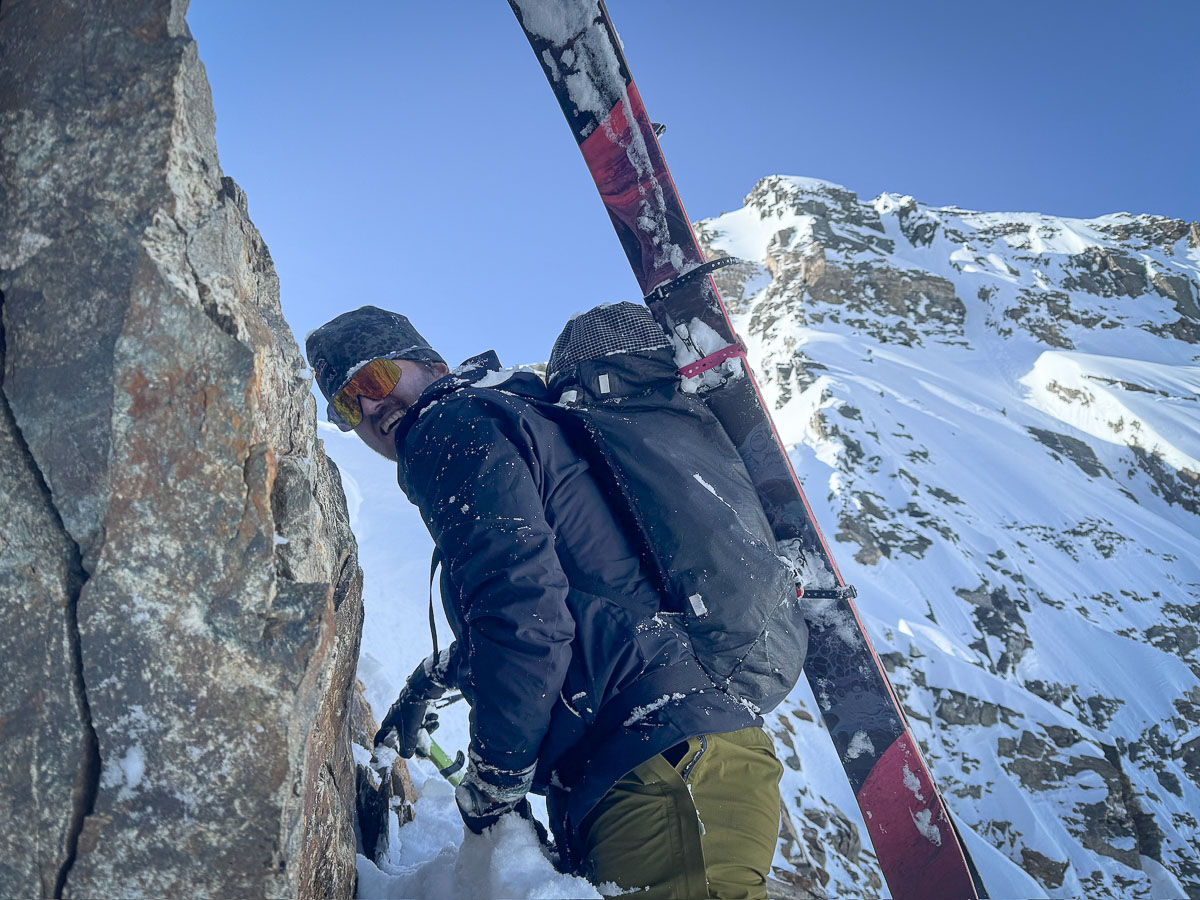
Testing Setup
I mounted the DWT 104 on the recommended line with my all-time favorite Ski Trab Titan Vario.1 bindings with a race adjustment plate that lowers the delta (to +4mm) and lightens up from the usual Vario plate. I mostly paired the DWT 104 with the Technica Zero G Peak, which I found plenty supportive in managing the 179cm skis in most conditions.
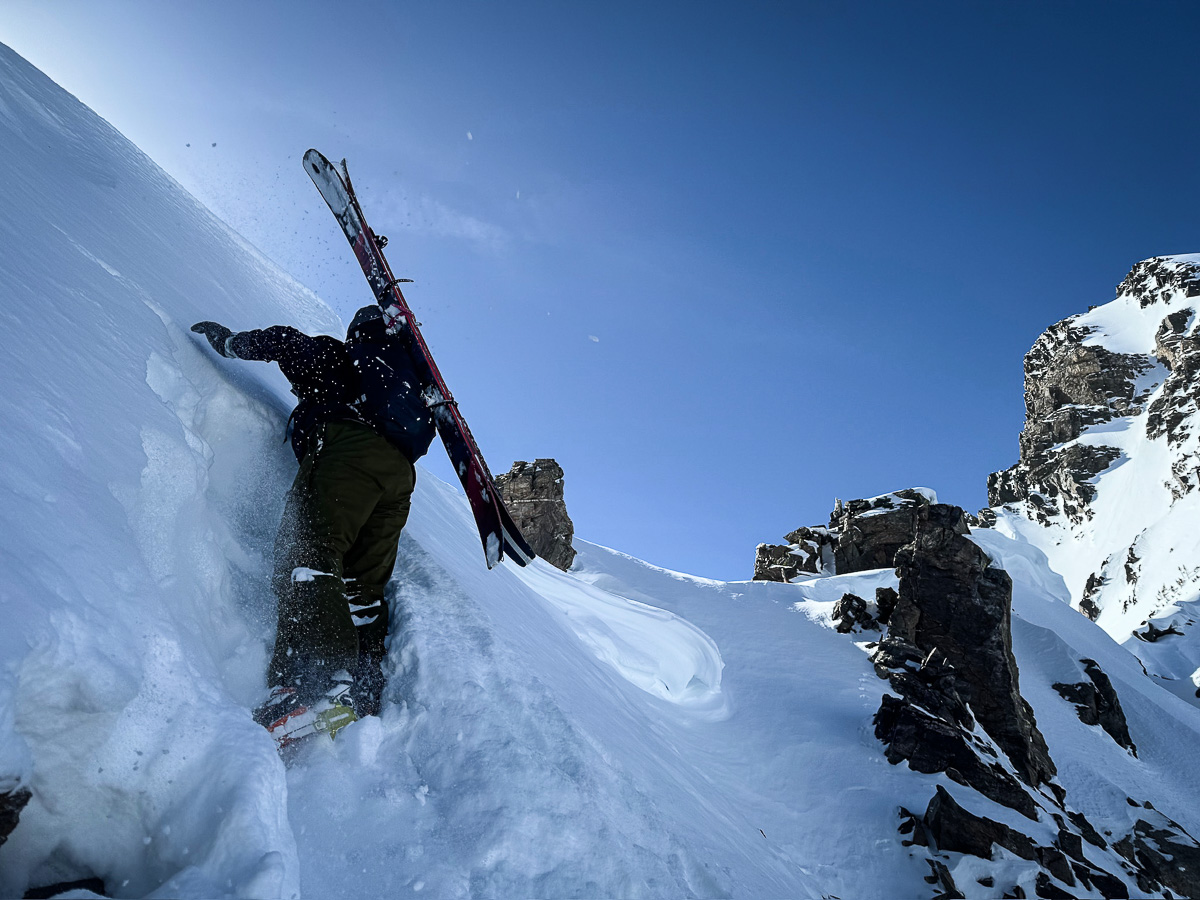
Field Testing
Powder/soft snow
With its huge tip and tail splay and deep, aggressive rocker lines, it should be no surprise that the DWT 104 was a blast in soft snow. I’m not going to perpetuate the old “floats better than I expected for its width” adage; it’s time to update our expectations of modern rockered skis. That being said, aside from proper deep or upside down powder, the DWT 104 had plenty of float and planed easily. I was surprised, given the big tail rocker and twin tip, at how well the tail tracked when arcing turns; unlike, say, the Black Crows Draco Freebird, I felt like I could lay down “carved” turns in soft snow without any unwanted tail washout/slarving. Although not quite as loose, the Deathwish almost skied like a reverse camber ski in soft snow, with a similar on/off sensation of carving and slashing. This made tree skiing and tight spots fun and easy, and I felt like the 184 cm ski might have been the better choice. Relative to their looks, they don’t ski that short, but the fact is that it’s a heavily rockered twin tip, so it may be a good time to go longer.
Crud/tracked/variable snow
I’m thinking that maybe my “bad snow” category could be broken into two parts: Breakable crusts and 3D. It’s pretty tough for a ski, especially of the lightweight variety, to do well in both. In breakable crusts, reverse camber and taper are king–think 4FRNT Hoji or Heritage Labs BC90/110. The DWT 104 has a few things going for it in breakable; its short running length (especially in the 179 cm) makes it easier to throw around a bit, and the tip sliced/surfed breakable crust predictably. The tail, on the other hand, felt like a bit of a handful. I think the more radical twin tip provides more edge angles/surfaces to hook up unpredictably, compared to a rockered but more subtle tail. This made for an overall decent experience in breakable crusts, and in some ways, this only needs to be a go/no-go metric; the DWT 104 gets a go.
The DWT fared better in bad snow of the 3-dimensional variety. Here, some combination of camber, rocker, and mass is a recipe for success. The DWT 104 seems to have found a good balance of these attributes to allow for some pretty confident skiing in some pretty bad snow. My first few outings on the DWT 104 were during the heinous early-season drought we had in the Tetons in late 2023/early 2024. Everything was some combination of work-hardened tracks, sun crusts, and eventually bottomless facets. I swapped between the Black Crows Solis and the DWT 104 most days in this period, and it was interesting to feel how each ski handled these conditions. The Solis was effective at trucking through poor snow and not deflecting or yielding much, while the DWT was a bit more nuanced. It was more likely to get deflected, but it surfed/absorbed minor bumps better and felt like it required and rewarded a more active/engaged pilot,rather than just holding on for the ride.
Firm Snow/Steeps
This is the snow category that came with high expectations, given the hype around triple camber. In short, the DWT 104 delivered here. It delivered excellent edge hold even in quite firm snow. The 21m radius and minimal taper likely help here as the ski didn’t want to hook up too aggressively in steep jump turns, and the effective edge, while short, is…effective. I took the DWT 104 on a few adventurous and steep outings and quickly gained confidence in this setting. The progressive mount and twin tip helped them feel quick and easy to “come around” in a steep turn.
Small caveat—the twin tip isn’t the easiest for steep transitions. Ski Trab bindings help as you don’t need to step into the toe piece, but stabbing tails into the snow to secure skis for any reason doesn’t work so well.
Resort Skiing/groomers
Surely, the “full weight” Deathwish 104 would be the better choice for significant resort time, but damn- the touring build delivered some good times as well. These things absolutely rip on groomers, and the combination of lots of rocker, triple camber, and a touch of taper in the tips strikes a nice balance of maneuverability and suspension. The DWT 104 is probably #2 on my “touring skis in the resort” list after the very damp QST Echo.
Conclusion
If we did some sort of editors’ choice awards, the Deathwish Tour 104 would win the “Most Versatile” award. Thankfully, I don’t need to decide things like that every season, but I’d be hard-pressed right now to come up with a better quiver of one ski for a skier who wants to enjoy low-angle tree skiing, some powder skiing, as well as some more serious highmountain tours. I could see the DWT of the 112mm variety filling a similar role in the Teton’s, Wasatch, or other snowy environs, as the 104 is a little lacking on the deepest days.
If there was one thing I would change about the DWT 104, it would be to flatten out the tail. Not everyone needs to make steep transitions, and even fewer ski tourists are riding switch, but everyone out ski touring is making kick turns.
Depending on where on the internet you dwell, the Deathwish and its triple camber may be new news or the most hyped/recommended ski on the market. Given my experience, I would guess that many, if not most, ski tourists would enjoy the DWT 104. Folks with a strong preference toward rearward mount points and traditional shapes probably don’t need me to tell them they should look elsewhere, but for the rest of us, especially those seeking versatility, the DWT series is worth considering.
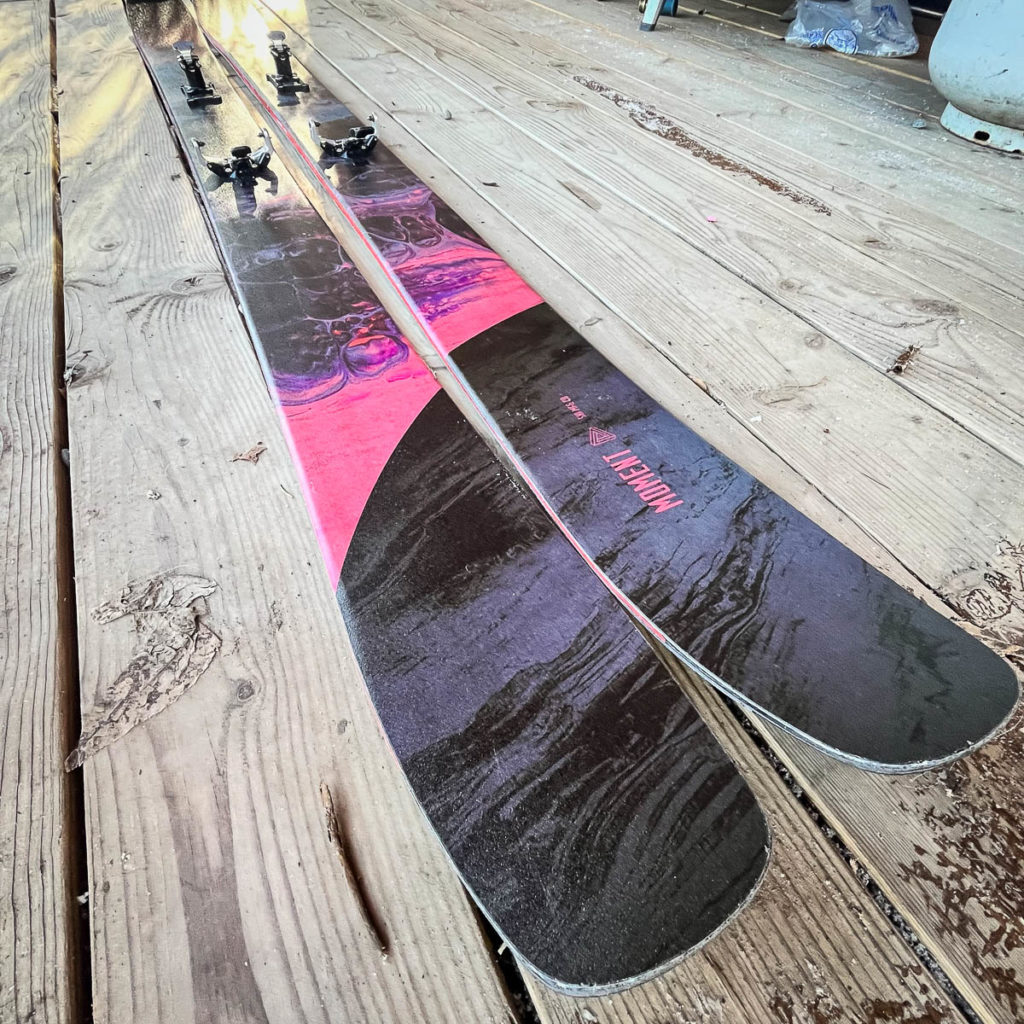
Specs
Available lengths (cm): 164, 174, 179 [tested], 184, 190
Weight: 1655g [verified]
Side cut: 132-104-124
Turn radius: 21m [179]
Core: Paulownia/Beech
Build Comments: Full ABS sidewall, 2.2mm Euro Edge, “low-fat” carbon layup
Shape: Unique triple camber profile, long-ish radius, twin tip, minimal tip-tail taper.
Recommended Mount Point (cm from center): -6cm
Drill size: 3.5×9.5mm
Similar Models: Line Vision 108, Moment Wildcat Tour 108
Price: $899





Leave a Reply
You must be logged in to post a comment.